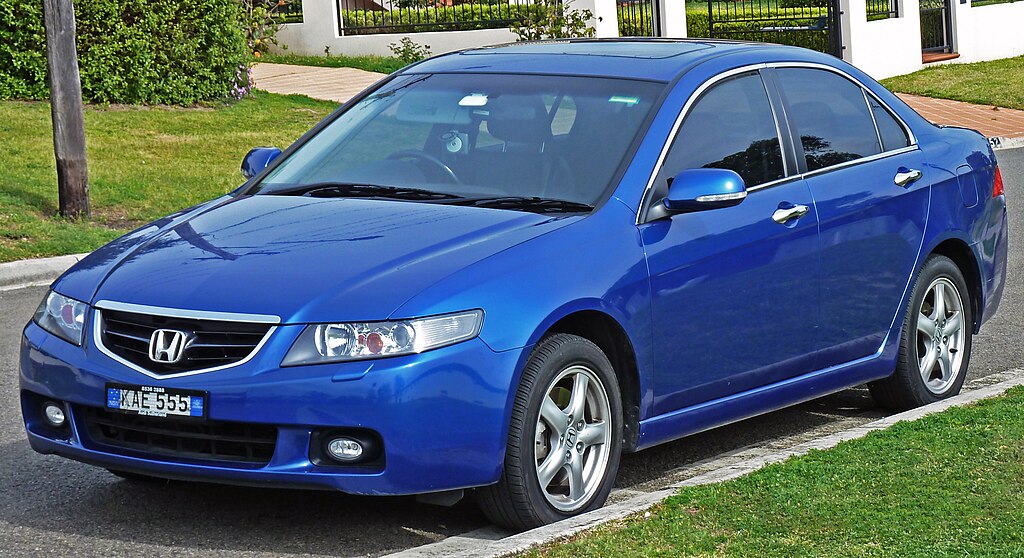A fuel door that refuses to open can be incredibly inconvenient, especially when you’re in a rush or trying to fill up.
For many Honda Accord owners, this issue is all too common, affecting both older and some newer models. Whether the release lever feels loose, the latch won’t engage, or the door won’t align, it can quickly become a hassle.
Knowing the common causes behind these problems and how to deal with them can help you avoid unnecessary stress and keep your fuel door functioning smoothly.

1. Cable-Actuated Release Issues
Stretched or Snapped Cable
The fuel door release cable in older Honda Accords often stretches or snaps due to wear or corrosion. When this happens, the release lever may feel loose or fail to open the fuel door.
To check, remove the interior trim near the lever and manually pull the cable. A loose or slack cable might still engage slightly, but a snapped one will feel completely disconnected.
To temporarily fix the problem, access the emergency release in the trunk and manually open the fuel door. A permanent solution requires replacing the cable with a properly routed OEM or high-quality aftermarket part.
Jammed or Damaged Release Lever
A jammed or broken release lever can also cause fuel door issues. Dirt or rust at the pivot point often makes the lever stick, while physical damage, such as bending or cracking, renders it ineffective.
Inspect the lever by removing its housing and checking for obstructions. Clean the pivot area and apply lubricant to restore smooth motion. If the lever is damaged, replace it with a new part and test its performance to ensure the problem is resolved.
2. Fuel Door Latch Assembly Problems
The fuel door latch in certain Honda Accord models, especially those from the mid-2000s to early 2010s, can become stuck in the locked position.
This often happens due to dirt, rust, or a worn spring within the latch mechanism. If the latch is stuck, the fuel door will remain closed even when the release lever is pulled.
To troubleshoot, gently press and release the fuel door while pulling the release lever to see if the latch hook moves. Remove the side panel to inspect the latch area from the trunk side if it remains stationary.
Debris can be removed with a brush or compressed air, and applying a lubricant like silicone spray can help restore some mobility.
However, if the spring or latch hook is visibly bent, broken, or heavily corroded, the entire latch assembly will need to be replaced.
Use an OEM latch to ensure proper fit and durability. After replacement, test the door several times to confirm the latch opens and closes smoothly.
3. Actuator or Solenoid (Electronic Releases in Newer Accords)
For Honda Accords with newer electronic fuel door release systems, particularly models from the mid-2010s onward, the actuator or solenoid responsible for opening the door can sometimes fail.
Symptoms include the door not responding when the release button is pressed, either from inside the car or on the key fob.
One common cause is a faulty actuator motor, which may no longer engage due to wear or electrical faults. Another issue could be a loose or corroded wiring connection between the actuator and the car’s control module. In rare cases, the body control module (BCM) might need reinitialization or repair.
To troubleshoot, listen closely when pressing the release button. If you hear a faint clicking or whirring sound, the actuator is likely receiving power but isn’t functioning correctly.
Conversely, complete silence might indicate an electrical issue. Inspect the actuator’s wiring connector for loose pins or signs of corrosion, and reseat or replace it if necessary.
If the actuator is unresponsive, replacing it is often the best solution. Finally, test the release multiple times after installation to ensure the problem is fully resolved.
4. Fuel Door Hinge or Alignment Issues
Honda Accords, especially those exposed to regular wear and tear or minor impacts, can develop problems with the fuel door hinge or alignment.
Models from the early 2000s to the present are particularly prone to this, as their fuel door mechanisms often rely on precise hinge movement to open and close smoothly. Symptoms include the fuel door binding against the car’s body, not closing flush, or requiring extra force to open.
A common cause is bent hinges, which can occur from accidental bumps or excessive force applied to the door. Over time, screws or bolts securing the hinge may loosen, causing the door to misalign. Also, debris buildup around the hinge area can restrict movement and exacerbate alignment problems.
To fix these issues, inspect the hinge for visible bending or looseness. Open the door and carefully test its range of motion, noting any resistance or scraping. If the hinge is slightly bent, gentle realignment with hand tools can often restore proper function.
For misaligned or loose hardware, tighten or replace the screws and ensure the door sits flush when closed. Regularly cleaning the hinge area to remove dirt or debris can prevent future binding.
Conclusion
A broken fuel door release on your Honda Accord can be inconvenient, but it often comes down to manageable fixes. Identifying the issue early can save time and effort, whether it’s a stretched cable, stuck latch, or misaligned hinge.
If repairs seem out of reach, a professional can ensure a proper fix and keep everything running smoothly. Regular checks and cleaning can help avoid these issues altogether, keeping your car hassle-free.
Was This Article Helpful?

Rami Hasan is the founder of CherishYourCar.com, where he combines his web publishing experience with a passion for the automotive world. He’s committed to creating clear, practical guides that help drivers take better care of their vehicles and get more out of every mile.
